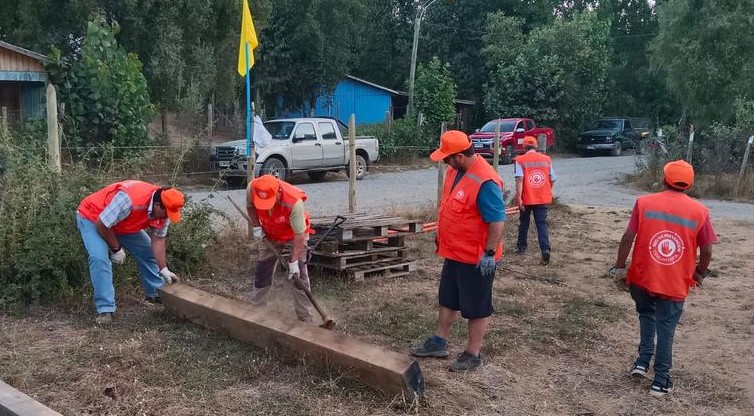After 14 heatwaves, Chile records more wildfires than last year, but with less destruction
More wildfires, but a smaller burned area. This is how the current fire season has performed compared to the previous period, according to the National Forestry Corporation (Conaf).
Behind this trend, cases of intentionality have emerged, reflected in simultaneous outbreaks, as reported by the Chilean Wood Corporation (Corma).
Additionally, with the imminent start of the peak season that occurs every year in Chile, experts assess the risks of the country experiencing episodes similar to those affecting California in the United States.
According to Conaf, between July 1, 2024, and January 14, there were 2,711 fires, compared to 2,263 in the same preceding period. However, the burned area decreased from 18,101 to 16,767 hectares. California has accumulated over 16,000 hectares devastated in just one week.
In Chile, the regions with the highest number of fires are Biobío (472), Metropolitan (450), and La Araucanía (417).
The "single strike" strategy
"This season is more complex in environmental conditions (...), because from October 1 to January 14, there have been 14 heatwaves, unlike last season, where there was only one heatwave in the same period," explains Conaf's executive director, Aída Baldini. She points out that "since it also rained in spring, grass grew abundantly, and that is what we now call dead fine fuel. That’s why we say there’s a substantial increase in fires."
Regarding why there is a smaller burned area, she explains: "It has been mandatory for all firefighting efforts to execute a 'single strike,' even if it sometimes sounds a bit exaggerated, because it means sending a technician, a brigade, two tandem aircraft to make drops, and even
airlifted brigades to arrive very quickly.
She acknowledges that "we’re talking about 0.01% of the area, but if we delay, we’ll arrive when it’s already one hectare, and then it’ll be 10 hectares. By understanding fire better, you know exactly where you can stop it, where you can control a fire."
In December, Daniel Berlant, Chief of Wildfire Fighting for California (Cal Fire), during a visit to the country, addressed the common factors with Chile. He stated that "both areas share a dry Mediterranean climate, with hot summers and flammable vegetation." According to him, both territories "face the challenge of the urban-rural interface, with homes built near or within forests, increasing the risk."
"Same characteristics as California"
Ramón Figueroa, president of Corma’s Forest Protection Department, notes that "climate change is moving faster than firefighting efforts because it’s surpassing extinction capabilities." In his analysis, "with a dry autumn and winter, along with hot winds, conditions are favorable for fire spread; what happens in California could very well happen to us in the near future."
He also recalls that 99.9% of fires in Chile are caused by people, whereas in California, "many fires are caused by nature."
Jadille Mussa, an environmental and climate change expert at Central University, explains that in Chile, "we’ve already had, on a Chilean scale, situations with significant destruction of homes and harm to people, where the difference was determined by the socioeconomic situation of the victims."
Along with supporting the idea that there is more intentionality in Chile’s fires, she notes that these are worsening due to wind effects, a condition that wasn’t present before. "Previously, our risk alerts appeared when 30°C temperature, 30% humidity, and 30 km/h winds coincided. California has always had much stronger winds, but last year, we already experienced winds over 120 km/h in the central zone," she emphasizes, adding that "this means we’re now facing the same characteristics influencing what happens in California."
Source:El Mercurio

















